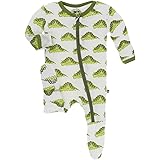The Imperative for Sustainable Fashion in UK Retail
The global fashion industry, a powerhouse of creativity and economic activity, faces an unprecedented challenge concerning its environmental footprint. Concerns regarding waste generation and resource depletion have intensified, compelling retailers across the United Kingdom to re-evaluate their operational models. This significant shift towards more sustainable fashion practices is not merely a trend; rather, it is being seen as a fundamental transformation of how garments are produced, consumed, and ultimately managed. Indeed, the video above provides a compelling snapshot of this evolving landscape, highlighting innovative approaches adopted by various UK businesses.
Historically, the fashion industry has been characterized by linear production models, wherein items are designed, manufactured, sold, used, and then disposed of. However, the environmental repercussions of this ‘take-make-waste’ approach are becoming increasingly evident, demanding urgent attention. The adoption of circular economy principles, for instance, is emerging as a viable alternative, offering pathways to reduce waste and maximize resource utility. This fundamental shift is being driven by both consumer demand for ethical choices and a growing corporate responsibility to mitigate ecological damage.
Embracing the Circular Economy: Rental and Resale Models
One of the most promising avenues for reducing fashion’s environmental impact involves the proliferation of circular economy models. These systems prioritize the extended use of products, thereby minimizing the need for new production and reducing waste sent to landfills. Garment rental and resale platforms are central to this transformation, allowing consumers to access a wider range of styles without contributing to excessive consumption.
My Wardrobe HQ: Pioneering Garment Rental Solutions
My Wardrobe HQ, established in London during 2019, epitomizes this forward-thinking approach. This retailer has positioned itself as a leading provider of luxury garment, bag, and shoe rental services. Their core ambition involves giving new life to pre-loved goods, an effort which significantly reduces demand for newly manufactured items. The platform’s commitment to the circular economy enables consumers to enjoy high-end fashion responsibly, addressing the common apprehension about environmental damage caused by the industry.
The appeal of such services is projected to grow considerably. Forecasts by analytics company GlobalData, for example, suggest that the UK rental market alone will achieve a valuation of $4 billion by 2029. This substantial growth indicates a strong consumer appetite for sustainable alternatives, validating the business models of innovators like My Wardrobe HQ. Consumers are increasingly seeking ways to enjoy fashion without the guilt associated with rapid disposal, and rental offers a practical solution to this dilemma.
Enabling Wider Adoption: The Role of Technology in Sustainable Retail
Recognizing the broader potential of their model, My Wardrobe HQ has strategically launched My Ventures, a new business arm designed to make its proprietary technology accessible to other firms. This initiative is crucial for scaling sustainable practices across the retail sector. Through My Ventures, brands are being offered the technological infrastructure required to facilitate rental and resale transactions directly through their existing websites. This platform also supports a fully managed service, which encompasses the entire operational supply chain.
Such a comprehensive service typically involves deployment, dispatch, identity checking, and meticulous care for fulfillment processes. By outsourcing these complex logistics, brands can seamlessly integrate circular economy offerings into their existing operations without needing to develop specialized infrastructure from scratch. This technological enablement is pivotal for accelerating the transition away from fast fashion, making sustainable retail models more attainable and efficient for a broader range of businesses, from niche boutiques to larger fashion houses.
Beyond Rental: Broadening Sustainable Retail Initiatives
The movement towards sustainable fashion extends far beyond the rental market, encompassing a variety of strategies adopted by diverse players within the retail landscape. Many established institutions and global brands are implementing their own distinct initiatives, demonstrating a collective commitment to reducing environmental harm and fostering more responsible consumption patterns.
Department Stores Lead the Way: Selfridges’ Comprehensive Approach
Prominent department stores, known for their influential position in retail, are increasingly rolling up their sleeves in pursuit of socially conscious strategies. Selfridges, a renowned London landmark, exemplifies this commitment with a clear and ambitious pledge to become a zero net emissions business by 2050. This target signifies a holistic approach to sustainability, addressing emissions across their entire value chain, from sourcing to store operations.
Furthermore, Selfridges has proactively launched in-store services focused on repair, reuse, and recycling. These initiatives provide tangible opportunities for consumers to extend the lifespan of their purchases, rather than discarding them prematurely. For instance, dedicated repair workshops for garments or accessories can significantly reduce textile waste, while in-store collection points for unwanted items facilitate their proper recycling or redistribution. Such comprehensive programs underscore a fundamental shift in retail strategy, moving beyond mere product sales to fostering a culture of responsible ownership.
Brand-Specific Commitments: H&M’s Sustainable Collections
Even major global brands that have historically been associated with fast fashion are making efforts to adapt. H&M, for example, was an early pioneer in developing sustainably branded ranges. These collections often feature materials sourced from recycled content or more eco-friendly alternatives like organic cotton or Tencel. The aim is to provide consumers with more environmentally conscious choices within a high-volume retail environment.
However, the concept of “sustainable collections” within fast fashion models is frequently subject to scrutiny. Critics often point out that the sheer volume of production and consumption inherent in the fast fashion business model may offset the benefits of individual sustainable items. Despite these challenges, such initiatives represent a growing awareness and a step towards integrating more responsible practices within mainstream fashion, signaling to consumers that sustainability is becoming a key consideration even in accessible markets.
The Environmental Toll of Fast Fashion and Shifting Consumer Behavior
The urgent need for sustainable practices is underscored by the immense environmental impact of the traditional fashion industry, particularly the segment known as fast fashion. The rapid production of inexpensive, trend-driven garments has severe ecological consequences that are now being quantified and understood by a wider audience. In contrast to past indifference, there is a distinct shift in consumer attitudes, driven by increased awareness of these issues.
Quantifying the Impact: Waste and Emissions Statistics
The scale of the problem is staggering. The global fashion industry, as a whole, is recognized for generating more carbon emissions than both international aviation and maritime shipping combined. This statistic alone highlights the industry’s significant contribution to climate change. Beyond emissions, the issue of waste is equally alarming. Research indicates that over 100 billion apparel units are produced globally each year. Disturbingly, more than half of these items are discarded or incinerated within the first year of their production.
This rapid turnover of goods places immense pressure on natural resources and waste management systems. From vast quantities of water required for cotton cultivation to the chemical dyes polluting waterways, and the microplastic shedding from synthetic fabrics, the environmental footprint of fast fashion is pervasive. Understanding these critical data points is pivotal for motivating both industry change and consumer action towards sustainable fashion.
The Consumer’s Influence: A Potential Decline in High-Volume Apparel
New research by UBS suggests that a significant shift in consumer attitudes is now underway. If the average consumer fully comprehends the considerable environmental footprint of the fashion industry, their purchasing habits are expected to change dramatically. The conclusion drawn from this research indicates a plausible scenario where people buy fewer clothes. Specifically, a potential decline of between 10% and 30% in high-volume, low-value apparel units could occur over a five to ten-year period.
This projected reduction in sales, particularly within the fast fashion sector, signals a powerful consumer-driven movement. Consumers, increasingly armed with information and a desire for ethical consumption, are likely to opt for quality over quantity, durable items over disposable ones, and services like rental or resale over new purchases. Such a substantial market shift would undeniably reshape the retail landscape, compelling more brands to invest in genuinely sustainable fashion practices and business models.











